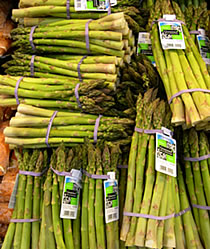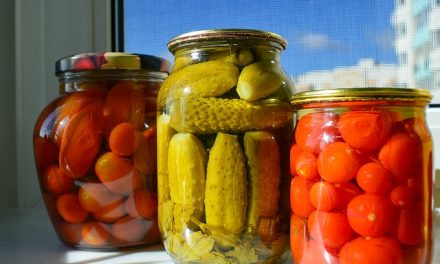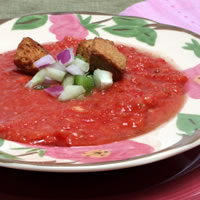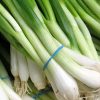Sucralose is the only low-calorie sweetener made from sugar. It is about 600 times sweeter than sugar and can be used like sugar in a broad range of foods. Sucralose can be used in place of sugar to eliminate or reduce calories in a wide variety of products, including beverages, baked goods, desserts, dairy products, canned fruits, syrups and condiments.
Sucralose was discovered in 1976. More than 100 scientific studies conducted over a 20 year period have conclusively determined that sucralose is safe for everyone to consume. Sucralose was recently approved by the United States Food and Drug Administration (FDA), and by the Joint FAO/WHO Expert Committee on Food Additives (JECFA) in 1990. Sucralose has been approved by prominent regulatory authorities throughout the world, and has been consumed by millions of people internationally since 1991.
It is used around the world as an ingredient in low-calorie processed foods and beverages, and as a tabletop sweetener available to consumers in supermarkets and other consumer outlets.
What is sucralose made of?
Sucralose is derived from sugar through a patented, multi step process that selectively substitutes three chlorine atoms for three hydrogen-oxygen groups on the sugar molecule. The tightly bound chlorine atoms create a molecular structure that is exceptionally stable and is approximately 600 times sweeter than sugar.
Is sucralose safe?
Yes. More than 100 scientific studies over a 20 year period have demonstrated the safety of sucralose. Importantly,comprehensive toxicology studies, designed to meet the highest scientific standards, have clearly demonstrated that sucralose is not carcinogenic. The data from the studies were independently evaluated by international experts in a variety of scientific disciplines, including toxicology, oncology, teratology, neurology, hematology, pediatrics and nutrition. What regulatory bodies reviewed the safety profile of sucralose? In addition to the FDA, the safety of sucralose has been confirmed by the Joint FAO/WHO Expert Committee on Food Additives (JECFA); the Health Protection Branch of Health and Welfare Canada; the National Food Authority of Australia; and the health ministries of Argentina, Brazil, China, and Mexico, for a total of more than 30 countries throughout the world.
Types of Products That Contain Sucralose
Sucralose makes low-calorie versions of a wide variety of products possible, including soft drinks, ice cream, dairy products and baked goods. One of the unique attributes of sucralose is that it can be used virtually like sugar without losing any of its sugar-like sweetness, even in applications that require prolonged exposure to high temperatures. Thus, products made with sucralose maintain their sweetness during cooking and baking, and in storage for long periods. In the United States, the FDA has granted approval for the use of sucralose in 15 food and beverage categories:
- Baked goods and baking mixes
- Beverages and beverage bases
- Chewing gum
- Coffee and tea
- Confections and frostings
- Dairy products analogs
- Fats and oils (salad dressings)
- Frozen dairy desserts and mixes
- Fruit and water ices
- Gelatins, puddings and fillings
- Jams and jellies
- Milk products
- Processed fruits and fruit juices
- Sugar substitutes
- Sweet sauces, toppings and syrups
Do products sweetened with sucralose carry any warning labels or information statements?
No. The regulatory agencies and scientific review bodies that have endorsed the safety of sucralose have not required any warning information to be placed on the labels of products sweetened with sucralose.
Does sucralose provide calories?
Sucralose itself has no calories. When it is used to sweeten foods or beverages, it adds no calories. However, products made with sucralose sometimes do contain calories from other sources, such as carbohydrates, proteins and fat.
How is sucralose handled by the body?
Although sucralose is made from sugar, the body does not recognize it as sugar or another carbohydrate. The sucralose molecule passes through the body unchanged, is not metabolized, and is eliminated after consumption.
Is the chlorine in sucralose potentially harmful?
No. Chlorine, in the form of chloride, is a safe and natural element present in many of the foods and beverages that we eat and drink every day. It is in most natural water supplies, and is also found in lettuce, tomatoes, mushrooms, melons, peanut butter and table salt. In the case of sucralose, the addition of chlorine to the sucralose molecule is what makes sucralose free of calories. Chlorine renders the sucralose molecule chemically and biologically inert so that sucralose passes through the body without being metabolized and is eliminated after consumption. Products sweetened with sucralose provide good-tasting, lower-calorie alternatives...
How much sucralose may people safely consume?
Studies have shown that the amount of sucralose which might be consumed by individuals, even if consumed every day throughout a person�s lifetime, would still be considered safe by a wide margin by U.S. and international health authorities.
The Acceptable Daily Intake (ADI) for sucralose, established by the U.S. Food and Drug Administration, is 5 mg/kg of body weight per day.
Can people with diabetes use sucralose?
Numerous studies have shown that sucralose can be safely consumed by people with diabetes. Sucralose is not recognized by the body as sugar or as a carbohydrate. It is not metabolized by the body for energy and does not affect blood glucose levels. Sucralose has no effect on blood glucose utilization, carbohydrate metabolism or insulin production. Products sweetened with sucralose provide good-tasting, lower-calorie alternatives for people with diabetes who are interested in reducing their caloric or sugar intake. As with any nutritional concerns, people with diabetes should consult their doctor or diabetes healthcare professional for advice on an individualized dietary plan.
Can pregnant and breastfeeding women consume sucralose?
Sucralose can be used by everyone, including pregnant women and breast feeding mothers. Although sucralose may be used as part of a healthy pre- and post-natal diet, women who are pregnant or breast feeding should talk to their doctor or nutritionist about foods to eat to support their health, and their baby�s health, during these special times.
Is sucralose safe for children?
Foods and beverages sweetened with sucralose are not hazardous to a young person�s health. One should note, however, that foods made with low-calorie sweeteners are not normally a recommended part of a child�s diet, since energy from carbohydrates is important to a growing child�s body.
What is the role of sucralose in a healthy diet?
Sucralose may be used as part of a healthy diet which includes a variety of nutritious foods in moderate portions. Because sucralose offers the sweet taste of sugar without the calories and is ideal for cooking and baking, it helps meet consumer demand for good-tasting foods and beverages without the calories of sugar.
International Food Information Council Foundation











